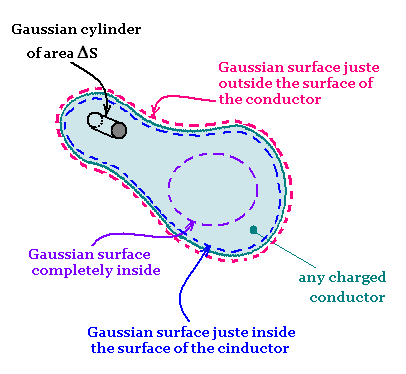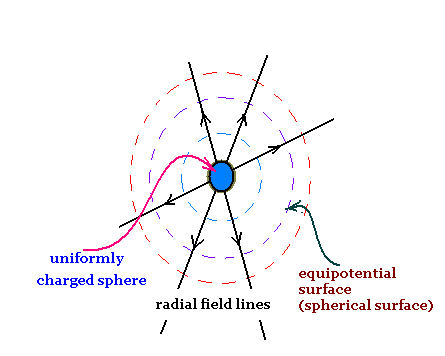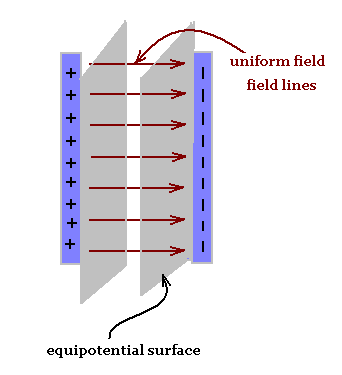|
Electrostatics
Electromagnetics
Electricity &
Magnetism
© The scientific sentence. 2010
| Electrostatic properties of a conductor

1. Field inside a conductor
Inside a conductor, the charges do not move. They are
stationary until an exterior electric field comes to exert
force on the charges. A conductor is in electrostatic state.
A conductor is not a volume distribution of charge. It
is a material with is neutral atoms. Therefore, there is no
excess charge inside a conductor. That is Σi = 0 inside
the conductor.
According to Gauss's law ΦE = 0. Hence
E(inside) = 0, Which justify the electrostatic state of the
conductor.
Inside a conductor:
E = 0
The excess charge is not inside a conductor. It resides
on the conductor's surface.
With a gaussian surface just inside the actual surface
of the conductor, The electric field is still zero.
As the excess cannot reside outside the conductor,
it must reside on the conductor's actual surface.
If a conductor possesses excess charge, then this charge
is distributed as a surface charge density σ.
2. Field outside a conductor
Outside the conductor, the electric field is perpendicular
to the actual surface away from the surface when the
charge distribution inside the conductor is positive and
toward the surface when the charge distribution inside
the conductor is negative.
We choose a gaussian surface that is a small cylinder with
faces parallel to the conductor's surface. The flux through
th lateral surface of the cylinder is zero because the field
E is perpendicular to the surface. The flux through the
base of the cylinder inside the conductor is zero because
E is zero inside. It remains just the exterior base
of the cylinder where the flux is Φ = E . ΔS =
EΔS.
Using Gauss's law with the gaussian surface just outside
the conductor, we find :
∫E ΔS = E S = Qenclosed/εo =
σ S/εo. Therefore
E(outside) = σ/εo
Outside a conductor:
E = σ/εo
3. Electric potential in a conductor
We have seen that the potential difference between two points
a and b in an electric field E is
| |
b
| → → |
| Vb - Va = - ∫ | |
E.dl
|
|
a
| |
Under static conditions, inside the conductor E = 0,
Hence Vb = Va. The potential is
then uniform. All points in the conductor are at the same
potential. The surface of a conductor is an
equipotential surface.
4. Equipotential surfaces
An equipotential surface is a surface on which
the potential is constant or equal. It is useful to visualize
the spacial behavior of a potential.
Using F = q E, and multiplying the equation above by a charge q, we obtain:
| |
b
| → →
|
| q(Vb - Va) = - ∫ | |
F.dl
|
|
a
| |
If the potential is equal or constant, then the left side
of the the equation is equal to zero. Therefore No
work is done by electric forces when the charge particle
moves along an equipotential surface.

Outside a uniformly charged sphere, we have equipotential
surfaces for each fixed radius. The potential V = k Q/r is
constant if the radius r is constant. The equipotential
surfaces are spherical and concentric with the sphere.
The equipotential surfaces in a uniform field are parallel
planes that are perpendicular to the elctric field E.

The potential surface is always perpendicular to the
line field of E.
|
|